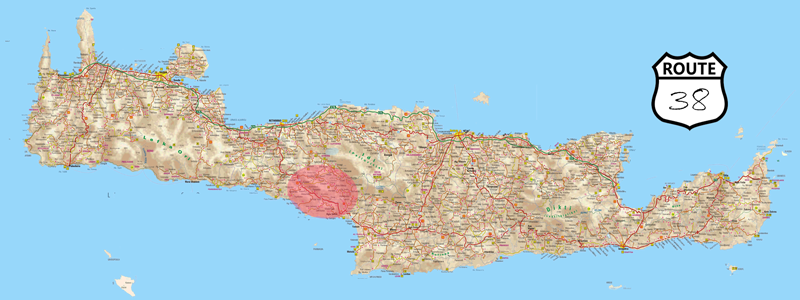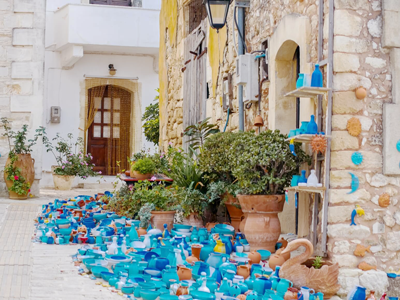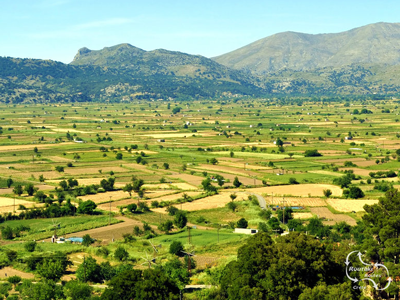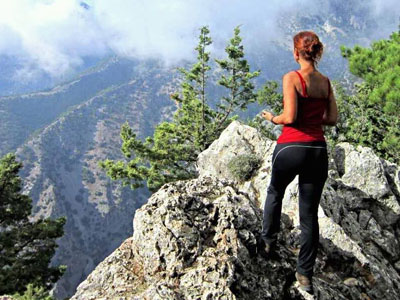
CAR ROUTE 38- ‘Agia Galini’
Spili – Agia Galini – Triopetra
What makes Routaki route 38 – ‘Agia Galini’ so special:
- you start the route in the picturesque village of Spili with its lion heads
- there you also have the opportunity to walk along the green oasis
- ascending through authentic Cretan mountain villages
- experiencing the differences between very old and newly planted olive trees
- the square with the gigantic plane tree in Ano Meros
- breathtaking views over the south coast
- time to explore Agia Galini; the harbor, the alleys, and the arena
- a stunning drive along the coastline towards Agios Pavlos
- a view over and the option to visit the Melissa Cape sand dunes
- drive along Akoumianos Gialos beach, better known as Little Triopetra
- unlimited enjoyment of the lovely sandy beach of ‘the three stones’ – Triopetra
- option to return via Mires, or to have another coffee in Spili
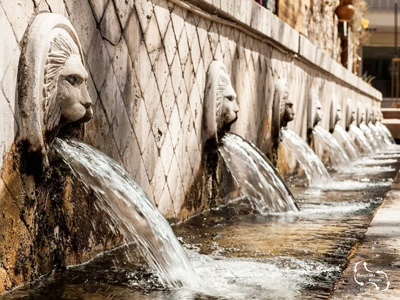
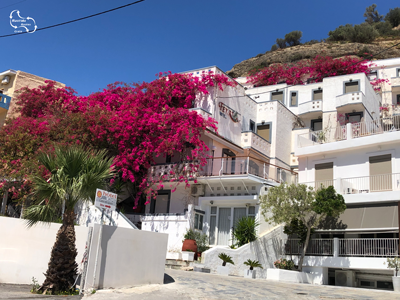
What makes Routaki route 38 – ‘Agia Galini’ so special:
- you start the route in the picturesque village of Spili with its lion heads
- there you also have the opportunity to walk along the green oasis
- ascending through authentic Cretan mountain villages
- experiencing the differences between very old and newly planted olive trees
- the square with the gigantic plane tree in Ano Meros
- breathtaking views over the south coast
- time to explore Agia Galini; the harbor, the alleys, and the arena
- a stunning drive along the coastline towards Agios Pavlos
- a view over and the option to visit the Melissa Cape sand dunes
- drive along Akoumianos Gialos beach, better known as Little Triopetra
- unlimited enjoyment of the lovely sandy beach of ‘the three stones’ – Triopetra
- option to return via Mires, or to have another coffee in Spili

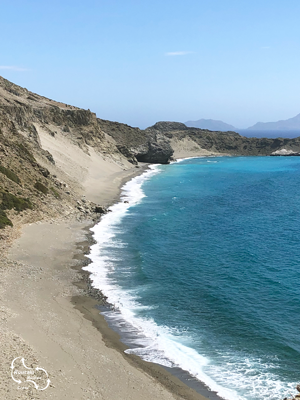
This route starts at the village parking lot of the village of Spili and is 92 km long (see the starting point on Google Maps). The idea behind this Routaki route is that it takes you a whole day. Enjoy the views, beaches, and villages you drive through.
This route takes place to the west of the widest part of the island. In Spili, you can first explore the village, or decide to do so at the end of this route, on your way back to your accommodation. The special thing about Spili is the Venetian water sources in the form of lion heads. After leaving Spili, you will be led into the mountains. In fact, the route guides you around the Kedros mountain range.
Once you have a view of the Libyan Sea, you will have already been explained via various RAGiFs [Routaki Audio Guide info Files] what you have encountered or seen along the way. This is the special thing about a Routaki route; you get the right information at the right time.
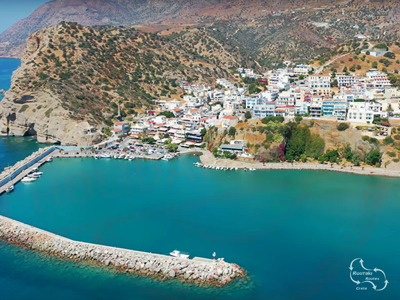
Examples of what you will hear along the way include: of course, an introduction about Spili and shortly after departure, you will learn why the road signs have been shot. From the Greek flag with its nine stripes, to the church, but also the Cretan involvement in the various occupations. It all comes up at an appropriate time. Your own smartphone acts as a guide, discussing matters you encounter along the way, or that are generally important for Crete. Through the various mountain villages, each with their own special story, you then descend towards the south coast, with the seaside resort of Agia Galini as a midday stop. Meanwhile, you will have heard a lot and learned about the olive harvest and the quality of the local Extra Virgin Olive Oil.

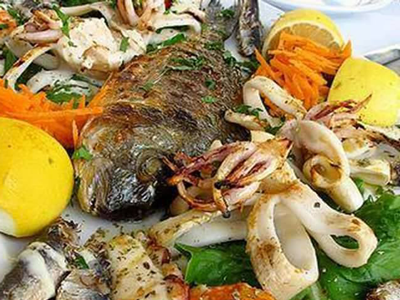
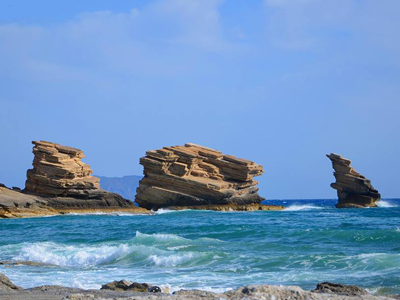
You continue driving and follow the route directions provided and displayed by your own smartphone or tablet. Routaki routes use the VoiceMap app. With this GPS-interactive software, you always know where you are, and the software knows what to play or display.
And all of this offline. You download the app for free, create an account, and purchase this route. The route is downloaded and is at your disposal forever. You can even listen to it in advance in the audio-book version for some anticipation.
The spoken texts, as well as the images, ensure that you drive around with a safe feeling and you realize that it’s almost impossible to get lost. Even sharp bends or potholes are noted. If you deviate from the route, the app will notify you so you can return to the route.
However, you can also interrupt or stop the route whenever you want. You can take a break, go swimming or take a walk in the woods. Whatever you want. If you wish to continue the route, simply press the ‘Resume‘ button and the route will be displayed again.
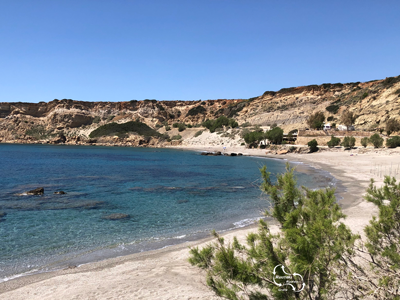
After thoroughly enjoying Agia Galini, this route takes you on a special road along the southern coast. No information for a moment, as the road is very close to the water, so concentration is necessary. This paved road leads you to the point where you can see the Akoumiani river with the unique beach of the Melissa Cape sand dunes behind it.
And as if that’s not enough, you can then choose between the small and large beach of Triopetra. In fact, the three stones form the division, which you will drive around. The last informative items are about celebrating and enjoying drinks. Something you can do back in Spili, or you can choose to drive towards Mires after the route and return to your accommodation from there.
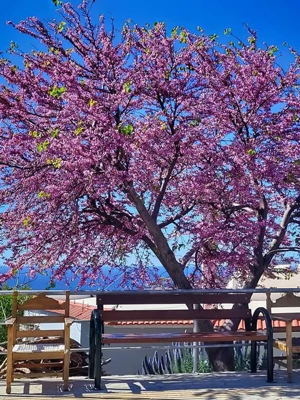
This route naturally includes audio clips about the highlights of Agia Galini and Triopetra. Many cultural and local aspects are mentioned, as well as olive oil, traditions, and customs. In addition, the RAGiF’s also provide information about some plant and tree species. In total, there are 26 different RAGiF audio files in route 38, in addition to all the audio explaining the route. The route is up-to-date and extensively narrated, with images for indication or clarification.
Some handy tips:
- Bring your smartphone battery charger.
- Maintain an average speed of 55-60 km.
- Wear appropriate clothing for churches and monasteries.
- Purchase the correct language version of the route (Dutch or English).
- Ensure that the route is NOT set to the audio-book setting.
- If you have one, bring a smartphone holder
- Disable automatic screen turn-off (don’t forget to put it back on afterwards)
